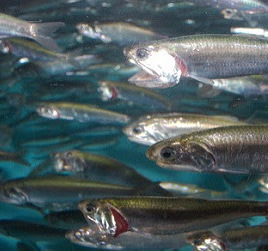Royal Society Open Science
Published February 20, 2019 17:01 ET (Brief from the Royal Society)
Analyzing behaviour of different stickleback species to determine when the fishes’ use of social information evolved, how it develops, what it is used for and how it works, the researchers found each species differed in its ability to use social information – differences that were most evident in foraging behaviour. Experiments with real fish and computer-animated ‘virtual sticklebacks’ showed that the fish identify the best food patches by paying attention to the activity and feeding attacks performed by others.
Canadian co-authors: Laura Chouinard-Thuly, McGill University – laura.chouinard-thuly@mail.mcgill.ca; Sean Rogers, University of Calgary – srogers@ucalgary.ca

